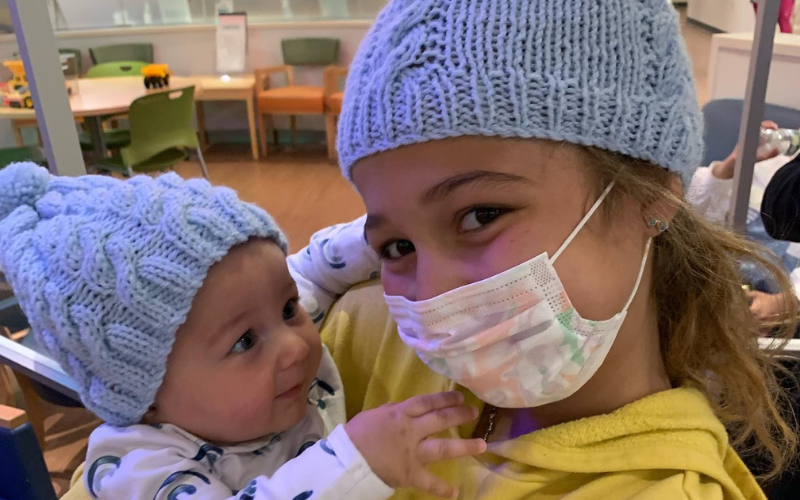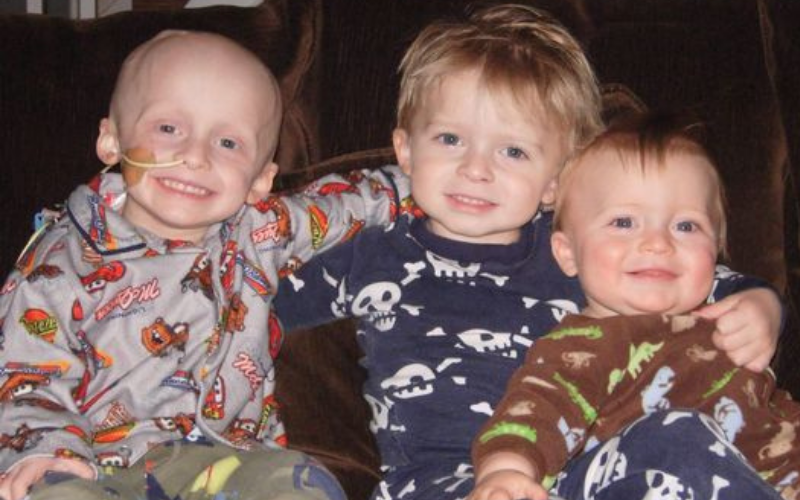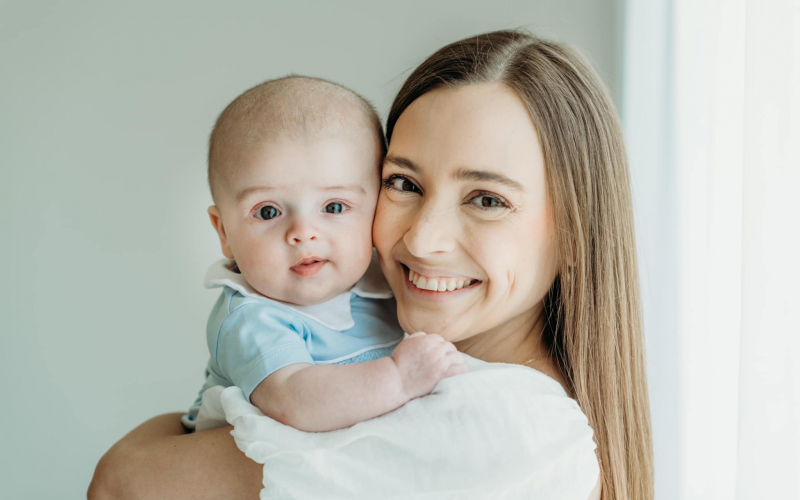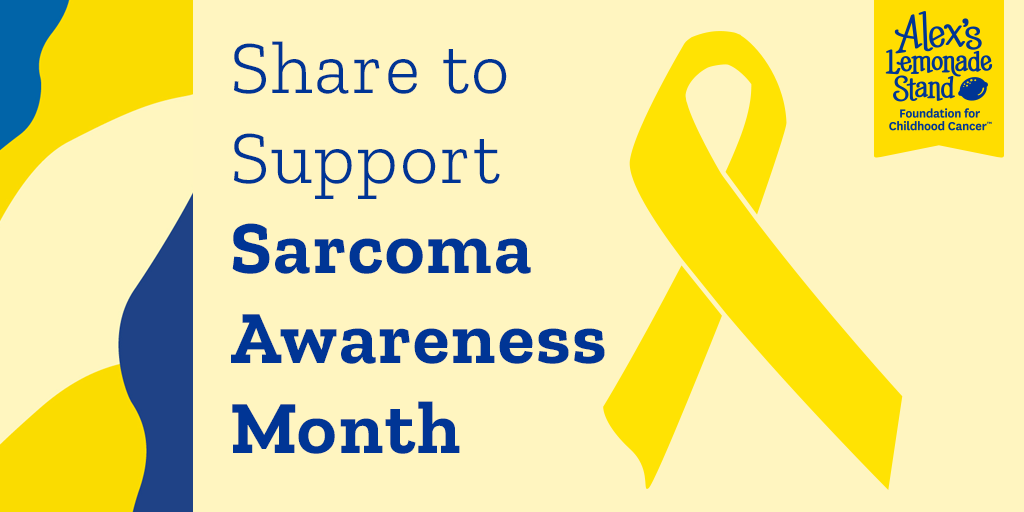
Lakelynn, who is battling a rare sarcoma, lived in extreme pain until a clinical trial stopped disease progression. Now thanks to research, she continues her search for a cure and enjoys being a big sister.
By: Trish Adkins
Frontline treatment for children with osteosarcoma, a type of bone cancer, hasn’t changed in 40 years.
At diagnosis, chemotherapy and surgery are recommended. If a child relapses and the cancer metastasizes to the lungs, where it most often does, the only option is a clinical trial. And for children with metastatic disease, the odds are terrifying: 5-year survival rates drop in half from 60-percent at diagnosis to 30-percent following osteosarcoma relapse.
For these children, the need for safer, effective treatments is urgent.
The story is similar for the more than 1,600 children that will be diagnosed with one of the 100 different subtypes of pediatric sarcoma this year. Sarcomas arise in the connective and supportive tissues of the body. These tumors can arise in the bones — like osteosarcoma and Ewing sarcoma — and in the soft tissues of the body — like rhabdomyosarcoma and synovial sarcoma.
July is Sarcoma Awareness Month and no one is more aware than the families and children affected by pediatric sarcoma and the researchers working to make a difference. While the facts give some context to pediatric sarcoma, the stories give us the inspiration to fight for more cures.
 1. Rhabdomyosarcoma: Declan
1. Rhabdomyosarcoma: Declan
When Declan Roberts was 3 years old, he told his mom, Megan:
“There are three things I can call stupid: Stupid cancer! Stupid medicine (YUCK)! Stupid shots!”
It was 2011 and Declan was already battling primary central nervous system (CNS) rhabdomyosarcoma, a type of sarcoma that arises in the soft tissues of the body. While it accounts for about 3% of all pediatric cancer diagnoses, Declan’s rhabdomyosarcoma was found in his CNS, which is extremely rare.
Declan began treatment — three brain surgeries, 30 weeks of intense chemotherapy and other procedures, which would keep him in the hospital and separated him for weeks from his two brothers, Brendan and Tommy. Still, his positive spirit and his drive to have no bad days, always won out over the negative.
While the cancer ultimately took Declan’s life, it never took his spirit or won any battles.
His family continues to fight for cures for pediatric sarcoma, as fundraisers, volunteers and lemonade stand hosts. Their work, together with the work of researchers and supporters everywhere, is helping to push the world closer to safer treatments and cures for pediatric sarcoma.
 2. Osteosarcoma: Taylor and the Crazy 8
2. Osteosarcoma: Taylor and the Crazy 8
Taylor was just 11 years old when she was diagnosed with osteosarcoma, a bone cancer and one of the most common types of pediatric sarcomas.
Treatments seemed to work for a little while, but then the cancer spread to Taylor’s lung. After the lung was removed, Taylor enrolled in a clinical trial at Texas Children's Hospital that was made possible by an infrastructure grant from Alex's Lemonade Stand Foundation (ALSF). Her family then waited, desperate for a cure.
The trial worked. Now, 10 years after the trial that saved her life, Taylor is cancer-free, a pediatric nurse in Alabama, married and raising her son Wallace.
But, for other kids with osteosarcoma, treatment for metastasized disease continues to be a mystery. To address this, ALSF funded two research teams through the Crazy 8 Initiative to specifically study osteosarcoma.
Learn more about the Crazy 8 Initiative
3. Ewing sarcoma: Dr. Heinrich Kovar, Crazy 8 Funded Research
Like his colleagues studying osteosarcoma, Dr. Heinrich Kovar is working to make an impact in Ewing sarcoma, another type of pediatric bone cancer through his Crazy 8 Initiative grant.
Dr. Kovar’s history with Ewing sarcoma started 30 years ago when he was a young student studying the disease. The unthinkable happened: his brother was diagnosed with Ewing sarcoma.
As Dr. Kovar’s brother was treated, doctors tried to give his brother hope by telling him that researchers were working to find cures for his cancer.
But for his brother, that work would not be fast enough. When he passed away, Dr. Kovar was left with a mission: find cures for pediatric sarcomas. Together with his Crazy 8 team, Dr. Kovar is looking for the Ewing sarcoma cell of origin and then finding ways to stop that cell from transforming into cancer.
 4. Rare sarcoma: Lakelynn
4. Rare sarcoma: Lakelynn
When Lakelynn was 3 years old, she began complaining about a “boo-boo” in her arm. An x-ray led to an MRI, which led to a finding: a tumor was wrapped around the nerves that controlled Lakelynn’s right arm. The tumor was inoperable, but a biopsy revealed it was a rare sarcoma and then genetic testing found the NTRK fusion. Dr. Steven Dubois at ALSF Center of Excellence hospital Dana Farber Cancer Institute was leading a clinical trial for a drug that suppressed the NTRK fusion. Lakelynn joined the trial, which used a drug called larotrectinib. Treatment shrunk her tumor significantly.
Today, she is 8 years old and continues on larotrectinib. Lakelynn has stable disease and travels to Boston once a month for follow-ups and medication. She is still searching for her cure, but the clinical trial has made it possible for her to go from being a little girl in pain to a little girl who loves being a big sister.

